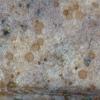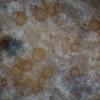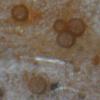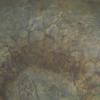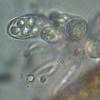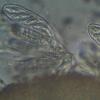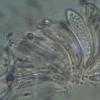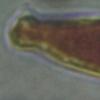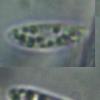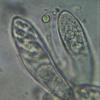
15-12-2025 07:09
 Danny Newman
Danny Newman
indet. Rutstroemiaceae sp. on unk. fallen leavesMc

15-12-2025 21:11
 Hardware Tony
Hardware Tony
Small clavate hairs, negative croziers and IKI bb

15-12-2025 15:54
 Johan Boonefaes
Johan Boonefaes
Unknown anamorph found on the ground in coastal sa

15-12-2025 15:48
 Danny Newman
Danny Newman
Melanospora cf. lagenaria on old, rotting, fallen

15-12-2025 07:05
 Danny Newman
Danny Newman
Pseudosclerococcum golindoi (det: Zotto)near Cosb

15-12-2025 11:49
 Danny Newman
Danny Newman
ITS sequences from the following two collections B

15-12-2025 12:34
 Danny Newman
Danny Newman
indet. Rhytismataceae on oak leafnear Purchase Roa

09-12-2025 12:06
 Andgelo Mombert
Andgelo Mombert
Bonjour,Je recherche l'article concernant Hypobryo
Discomycète s/ Comarum palustre.
Luc Bailly,
08-02-2012 18:07
Apothécies -> 0.2 mm, en groupes importants, apparemment émergées, chamois clair, sessiles, lisses, à hyménium plan, plus clair, et à marge brun plus vif, mince. Consistance coriace.
Asques 8-sp., sp. bisériées, courts, hyalins, à crochets, IKI BB fort. Peu de spores mûres: sp. guttulées, hyalines, peut-être immatures, 11-12.5 x 3-3.5 µ.
Paraphyses hyalines, renflées au sommet x 3-4 µ, avec une grosse guttule bien réfringente au sommet.
Excip. ectal text. ang. émoussé, brun clair, plus foncé à la marge et près du point d'attache.
Aucune idée...
Amitiés - LUC.
Hans-Otto Baral,
08-02-2012 18:16

Re : Discomycète s/ Comarum palustre.
Hi Luc
intersting collection! I have only Aivenia tantula in my database for Comarum which appears similar, but spores are only 6-7 x 1.3-1.5.
Mollisia minutissima and Pyrenopeziza comari also exist.
There is a refractive VB in the paraphysis apex. Together with the remaining characters this reminds me of a Calloriella (= Crustomollisia), though a brown cloddy exudate is not visible on the excipulum.
Zotto
intersting collection! I have only Aivenia tantula in my database for Comarum which appears similar, but spores are only 6-7 x 1.3-1.5.
Mollisia minutissima and Pyrenopeziza comari also exist.
There is a refractive VB in the paraphysis apex. Together with the remaining characters this reminds me of a Calloriella (= Crustomollisia), though a brown cloddy exudate is not visible on the excipulum.
Zotto
Luc Bailly,
08-02-2012 18:36
Re : Discomycète s/ Comarum palustre.
Hi Zotto,
This is a nature reserve I often visit, so it's likely I can find more samples.
I do see brown exudates on the photo of the ectal excipulum. Quite clear brown though.
With the paraphyses, and the excipulum text. ang., I excluded Mollisia and Pyrenopeziza.
Calloriella is a genus I haven't seen yet, so, difficult to say. All I have in my refs is a Stip's photo of C. umbrinella on Solidago, and yes, there are similarities (paraphyses, excipulum) with that genus. Is there a study available on Calloriella?
Many thanks, cheers - LUC.
This is a nature reserve I often visit, so it's likely I can find more samples.
I do see brown exudates on the photo of the ectal excipulum. Quite clear brown though.
With the paraphyses, and the excipulum text. ang., I excluded Mollisia and Pyrenopeziza.
Calloriella is a genus I haven't seen yet, so, difficult to say. All I have in my refs is a Stip's photo of C. umbrinella on Solidago, and yes, there are similarities (paraphyses, excipulum) with that genus. Is there a study available on Calloriella?
Many thanks, cheers - LUC.
Chris Yeates,
08-02-2012 20:22

Re : Discomycète s/ Comarum palustre.
Bonsoir Luc
there are similarities between your disco and the one in the post I made on another fungus, for which Zotto pointed me towards Calloriella / Crustomollisia (mine was much more encrusted though) http://www.ascofrance.com/search_forum/16442
I shall follow this with interest
Amitiés
Chris
there are similarities between your disco and the one in the post I made on another fungus, for which Zotto pointed me towards Calloriella / Crustomollisia (mine was much more encrusted though) http://www.ascofrance.com/search_forum/16442
I shall follow this with interest
Amitiés
Chris
Luc Bailly,
08-02-2012 20:31
Re : Discomycète s/ Comarum palustre.
Hi Chris,
Thanks for this ref. Yes, my sample is quite close. I didn't notice the paraphyses' reaction to IKI though. My sample is less incrustated, and paler. But this aside, it seems to me Calloriella is a possibility.
Cheers - LUC.
Thanks for this ref. Yes, my sample is quite close. I didn't notice the paraphyses' reaction to IKI though. My sample is less incrustated, and paler. But this aside, it seems to me Calloriella is a possibility.
Cheers - LUC.
Hans-Otto Baral,
08-02-2012 20:37

Re : Discomycète s/ Comarum palustre.
I did not speak of an IKI-reaction of the paraphyses, only of very ?striking refractive vacuoles in the apical cell which disappear in the dead state and which you will therefore hardly find mentioned in the literature. But they are very typical for Calloriella.
Zotto
Zotto
